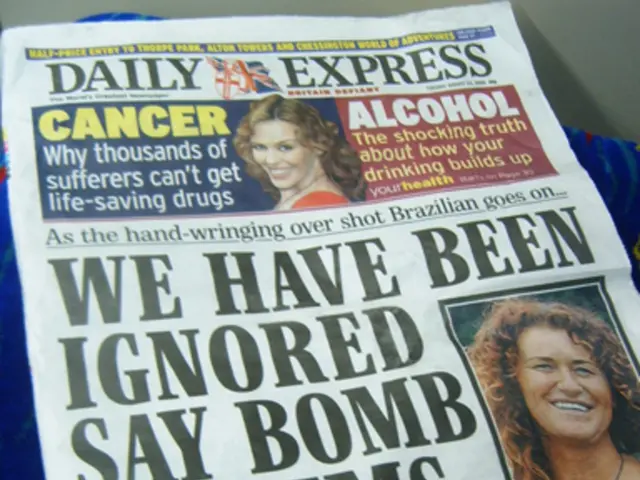Delving Deep into Feelings: A Compendium of Melancholic Poetry Books and Literature on Depression
The Transformative Power of Melancholic Verse: A Deep Dive into Sad Poetry
Throughout history, poets have delved into the depths of human emotions, with melancholy being a recurring theme that spans diverse cultures and eras. This genre, known as sad poetry, provides more than just a platform for artistic expression; it offers therapeutic value by providing a means for individuals to process and cope with emotions.
Sad poetry has a long and storied history, dating back to ancient Greek elegies and encompassing a rich tapestry of human experiences. Over the centuries, this genre has evolved, reflecting the changing nature of our sorrows and the ways we cope with them. From the haunting verses of Edgar Allan Poe to the raw honesty of Sylvia Plath, melancholic literature has captivated readers and inspired generations.
One of the key therapeutic values of reading and writing sad poetry is emotional catharsis. This unique form of release allows individuals to process their feelings and find comfort in the shared human experience of suffering. Encounters with verses that mirror their own emotions often provide a sense of validation and understanding, which can be profoundly healing.
Iconic collections have left indelible marks on the landscape of sad poetry. Edgar Allan Poe's "The Raven and Other Poems," Sylvia Plath's "Ariel," Pablo Neruda's "Twenty Love Poems and a Song of Despair," and Emily Dickinson’s collected works are just a few examples that continue to resonate with readers. These timeless works offer a mirror to the human psyche, revealing the complexities and intricacies of the emotion known as sadness.
In recent years, a new wave of poets has emerged, bringing fresh perspectives to the tradition of melancholic verse. Rupi Kaur's "Milk and Honey," Ocean Vuong's "Night Sky with Exit Wounds," Mary Oliver's "Dream Work," and Lang Leav's "Love & Misadventure" are just a few examples of contemporary collections that resonate with modern readers, particularly those grappling with mental health issues and societal pressures.
Sad poetry and depression literature often intersect, with many poets drawing on personal experiences of mental illness to create their work. This intersection provides a powerful platform for articulating depressive experiences, giving voice to feelings that can often be difficult to express. Symbols of sorrow, such as rain, shadows, or wilting flowers, become shorthand for deeper psychological experiences, allowing readers to connect with the poet's emotions on both conscious and subconscious levels.
The use of metaphor and imagery in sad poetry plays a crucial role in conveying complex emotional states. By transforming pain into poetry, these symbols create a bridge for readers to understand and empathize with the poet's profound emotions.
Finding healing through sad poetry books can take many forms, but one effective approach is combining it with journaling and self-expression. Reflecting on poems through writing can help individuals process their own emotions more effectively, leading to increased self-awareness and emotional resilience.
Whether drawn to the verses of classic poets or seeking solace in the words of contemporary wordsmiths, engaging with this genre can provide valuable insights and emotional support. In a world where mental health struggles continue to be a pressing concern, these works serve as beacons of empathy and understanding, offering flowers for sadness that bloom into hope and resilience.
Sources:
- Poe, E. A. (1845). The Raven and Other Poems. Wiley and Putnam.
- Plath, S. (1965). Ariel. Faber and Faber.
- Neruda, P. (1924). Twenty Love Poems and a Song of Despair. Editorial Nascimento.
- Johnson, T. H. (Ed.). (1960). The Complete Poems of Emily Dickinson. Little, Brown and Company.
- Kaur, R. (2014). Milk and Honey. Andrews McMeel Publishing.
- Vuong, O. (2016). Night Sky with Exit Wounds. Copper Canyon Press.
- Oliver, M. (1986). Dream Work. Atlantic Monthly Press.
- Leav, L. (2013). Love & Misadventure. Andrews McMeel Publishing.
- Sexton, A. (1966). Live or Die. Houghton Mifflin.
- Broder, M. (2016). Last Sext. Tin House Books.
- Sin, R. H. (2015). Whiskey Words & a Shovel I. Andrews McMeel Publishing.
- Benaim, S. (2017). Depression & Other Magic Tricks. Button Poetry.
- Mazza, N. (2016). Poetry Therapy: Theory and Practice. Routledge.
- Hedges, D. (2005). Poetry, Therapy and Emotional Life. Radcliffe Publishing.
- Neurolaunch. (2023). Exploring the Depths of Heartache: Sad Poems About Love and Depression.
- Neurolaunch. (2023). Depression Rhymes: Exploring the Intersection of Mental Health and Poetry.
- Neurolaunch. (2023). Exploring the Depths of Emotion: Sad Spanish Quotes and Depression Expressions.
- Incorporating therapy and mental health practices, such as journaling, into the reading and writing of sad poetry can lead to effective emotional catharsis and increased self-awareness.
- Sad poetry, while deeply rooted in psychology and science, also intersects with various aspects of modern lifestyle, including health-and-wellness, fashion-and-beauty, food-and-drink, and books, as it offers alternative avenues for coping with anxiety and depression.
- To further our understanding of melancholic literature and its therapeutic value, we can delve into the works of contemporary poets, such as Rupi Kaur, Ocean Vuong, Mary Oliver, and Lang Leav, who speak to the emotions of a generation struggling with mental health issues.
- Paralleling the evolution of mental health treatment, modern literature showcases a blossoming of genres that address these concerns, creating a unique symbiosis between poetry, entertainment, and mental health consciousness.
- In the realm of food-and-drink and lifestyle magazines, we can find content on the intersection of mental health and poetry, offering readers insights into how sad poetry can influence our emotional well-being and provide comfort and support in times of adversity.
- Expanding our literary horizons, we can turn to books that bridge the gap between poetry and psychology, such as poetry therapy theory and practice books, to gain a deeper understanding of the transformative power of melancholic verse.








